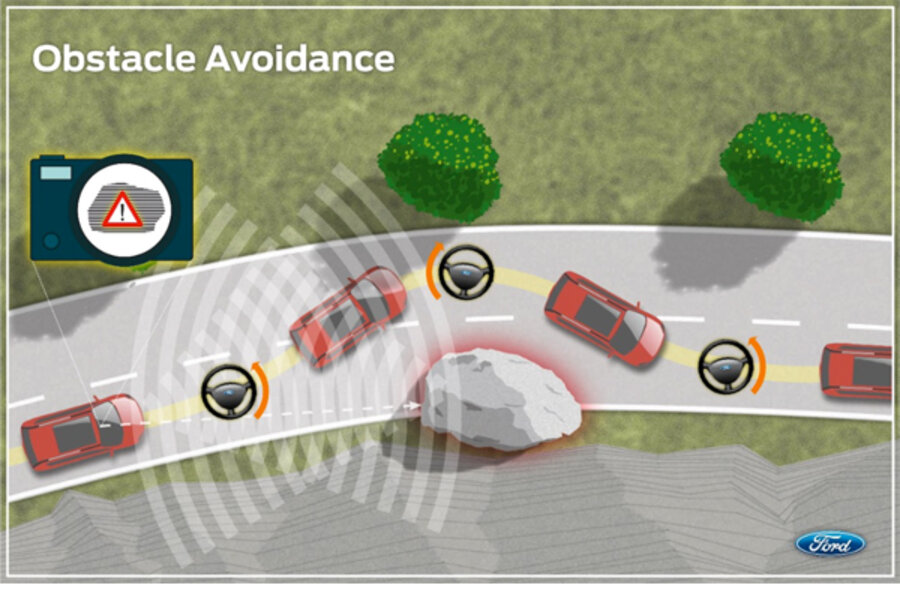Ford rolls out self-driving vehicle
Loading...
Imagine no longer having to deal with bumps against the parking garage walls or dings from opening your car into the next car over (parked 6 inches away).
That could be the case in the near future as Ford Motor Company develops a car that can now park itself without you in it.
Ford recently released its new Fully Assisted Parking Aid, as well as an Obstacle Avoidance feature where your car will automatically dodge pedestrians or stopped cars if you aren’t paying attention. For now, the car is in the concept stage, but if it comes to market, drivers could find themselves letting their car do more driving than ever before.
First up, the self-park. Ford isn’t the first car company to delve into self-parking technology but this is by far the most comprehensive system yet. While driving up to 18 miles per hour, the car uses radar, ultrasonic sensors, and a front-mounted camera to detect parking spots that would fit each individual vehicle. Then, drivers can actually get out of their car and simply hit the Fully Assisted Parking aid button on their key fob and the car will do the rest. When the driver returns, they can also have the car pull out for them — no need to squeeze into your car while boxed in on either side.
This hypersensitive detection technology also will work while the car is moving. Ford tested cars going up to 38 miles per hour that can detect a slow or stopped car, obstacles in the road, or rogue pedestrians within a range of 650 feet. Once the system detects an obstruction, it issues a warning and a chime to let the driver know something is ahead. If the driver doesn’t react in time, the car takes over: it can look for gaps in traffic, apply the brakes, and take control of steering.
For now, this car is solely parked in the concept garage. But it may not stay that way for long. Self-driving cars are all the rage in the auto-world today. Nissan recently announced it would have a full line of self-driving cars on the market by 2020, Volvo and Mercedes have both been working on high-end models, and even Google is developing a self-driving car that has already driven more than 300,000 miles.
Safety is the priority for most of these vehicles, as research from the International Organization for Road Accident Prevention shows 90 percent of accidents are caused by driver error. Does that mean handing the wheel to machines will cut down on crashes? We’ll have to wait and see.








